Are you a first time visitor to Japan and looking for top attractions in Tokyo? Why not start with exploring the best things to see in Asakusa, Tokyo. Here you’ll see the forgotten side of Asakusa which was once filled with Geisha, courtesans, writers, artists, and actors.
Pearl Harbor Attack had awakened a sleeping giant. The tide had turned against the Axis forces. Dresden and Hamburg’s firebombing sent alarm bells ringing. In spite of the looming fear of losing the war, Japanese were looking for ways to rejoice. And there couldn’t be a better time than Sakura (Cherry blossom). During the day, Asakusa residents would steal some time from their war duties to watch Sakura bloom, shop at Nakamise Street, relish the freshly baked Ningyouyaki and pray for their protection at Sensō-ji shrine. In the evening, Kabuki theater and Geisha shows would be their escape.

This was routine in Entertainment District of Asakusa until the fateful night of 9th March 1945. Operation Meetinghouse took place on the nights of March 9 and 10, 1945, where US bombers dropped 1,665 tons of bombs on the wooden city of Tokyo. Firebombing burst the city into flames. Wood and paper constructions fueled the blazing fire. A Strong breeze whipped the individual blazes into a firestorm.
Canals boiled, Sumida River ran red with blood, water bodies became boiling hotpots where people were simply boiled alive, bridges fell, metal melted and everything, whether living or non-living, burst spontaneously into flames. Tokyo was flattened and burnt to ashes. Hell could not have been hotter than Tokyo, where temperatures reached 1,800 degrees. As per the records, 105,400 died, 125,000 were injured and 1.5 million lost their homes. The US Firebombing killed more people than the atomic bomb attacks on Hiroshima and Nagasaki five months later.
71 years later Tokyo has bounced back in a more glamorous avatar. Asakusa got a new face-lift. Shrines got reconstructed, markets got buzzing with customers and Asakusa became a major tourist attraction. But one thing died in 1945 – The Entertainment District of Asakusa. The home of Kabuki and Geisha became a mass grave.
When I got an opportunity to join the Asakusa, Tokyo Tour with Context Travel, I was unaware of this reality. I didn’t know the historical and cultural relevance of the area. Those two hours with the Context Tour guide and the rest of the day was an eye-opener for me. Come let’s walk.
On 7th November 2016, I met my guide and five other travelers at Asakusa Culture Tourist Information Center. Elena, the Russian guide based out of Japan, was like a walking talking encyclopedia. She took us to the rooftop of the building from where we got a bird’s eye view of the entire area. She shared stories, which I bet even Google wouldn’t know.
We crossed the road to visit Sensōji Temple, Tokyo’s largest and oldest Buddhist temple. Kaminarimon or “Thunder Gate” welcomed us with its giant lantern and statues of guardian gods Raijin (god of thunder) and Fujin (god of wind). As per Elena, it was first built in 942 AD but was destroyed numerous times and the last reconstruction happened after WWII.
Crossing the Thunder Gate we arrived at the 250-meter shopping street of Nakamise that led us to the temple. The Nakamise Street was lined with 90 shops on both sides selling souvenirs and snacks. The shops have been there since the 17th century and are run by the same family for generations. We tried Ningyouyaki while our ears were glued to the interesting stories Elena was narrating.
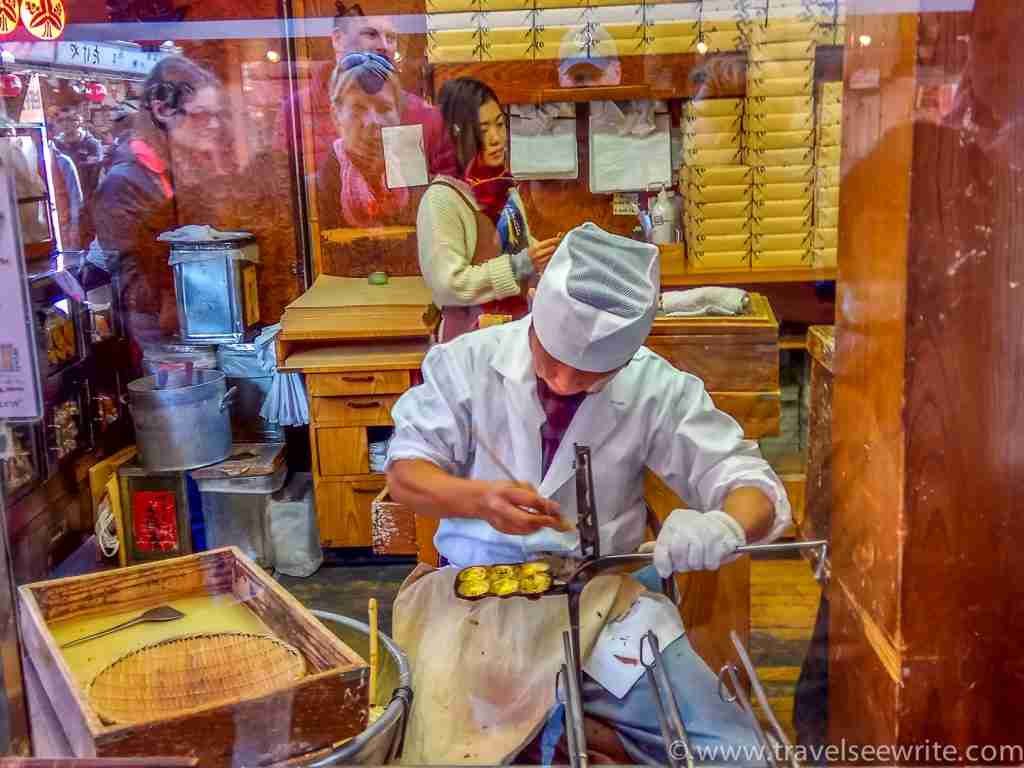
We were left awestruck at the end of the arcade where Hōzōmon Gate stood majestically with a giant straw sandal (waraji) hung up on one side. Ferocious guardian god couple guarded the gates of the shrine.
We were now at the perennially busy Kannondō (Kannon Hall) of Sensō-ji shrine, with a sea of worshipers wafting incense over themselves, praying and donating to Kannon, the Goddess of Mercy. The shrine is said to be here since 628 AD, although it has been refurbished many times.
Before we started our walk, Elena had told us that if we are lucky we might see Japanese families in traditional attire celebrating the 7-5-3 festival at the shrine. Shichi-go-san festival (7-5-3) is celebrated for children aged 7, 5 & 3 and hence the name. The official date is November 15th, but as it’s not a national holiday most families hold their festivities on the nearest weekends. Usually, a purification rite and the reciting of Shinto prayers are performed that day. Most girls wear Kimonos while boys come in Haori. We were lucky to catch not just one but many families dressed in their traditional attire.
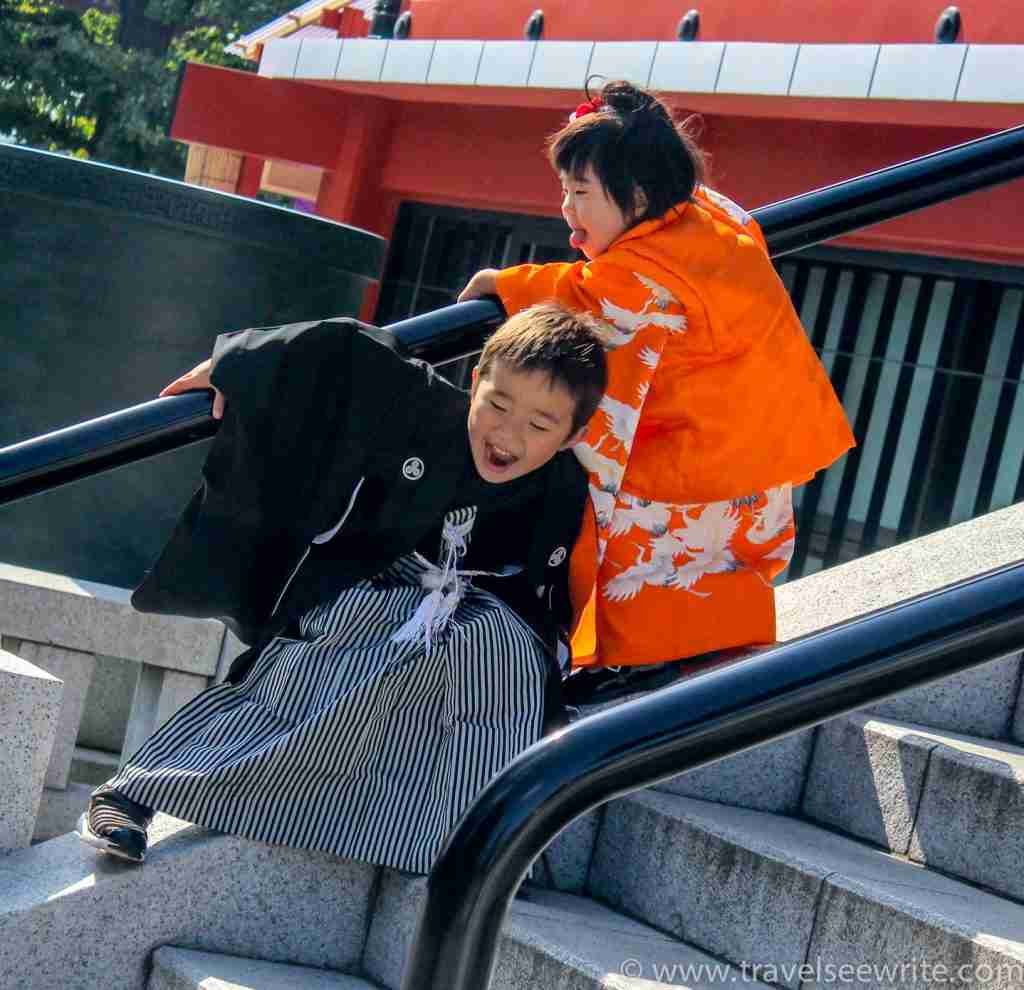
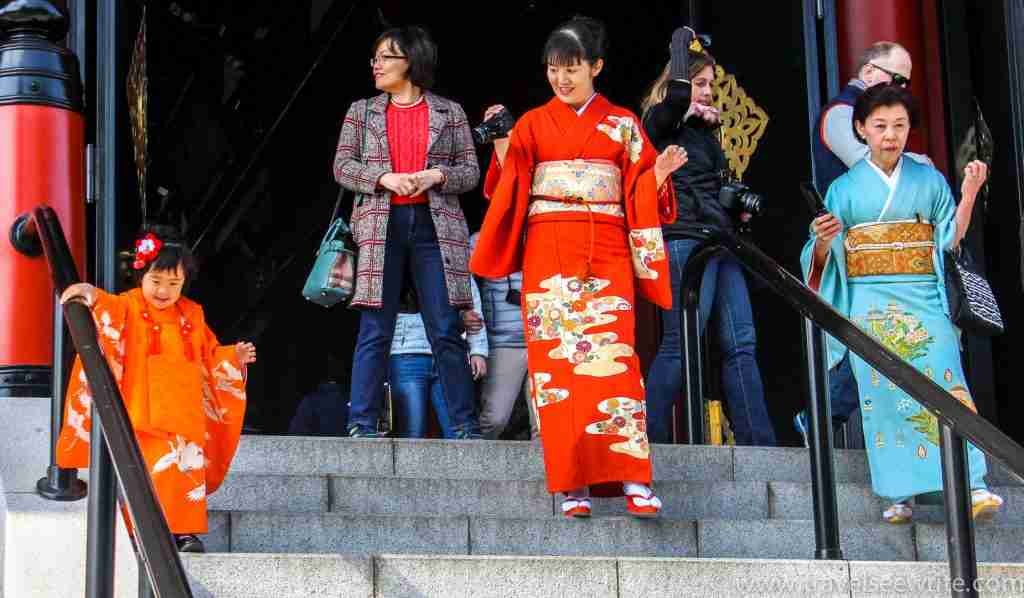
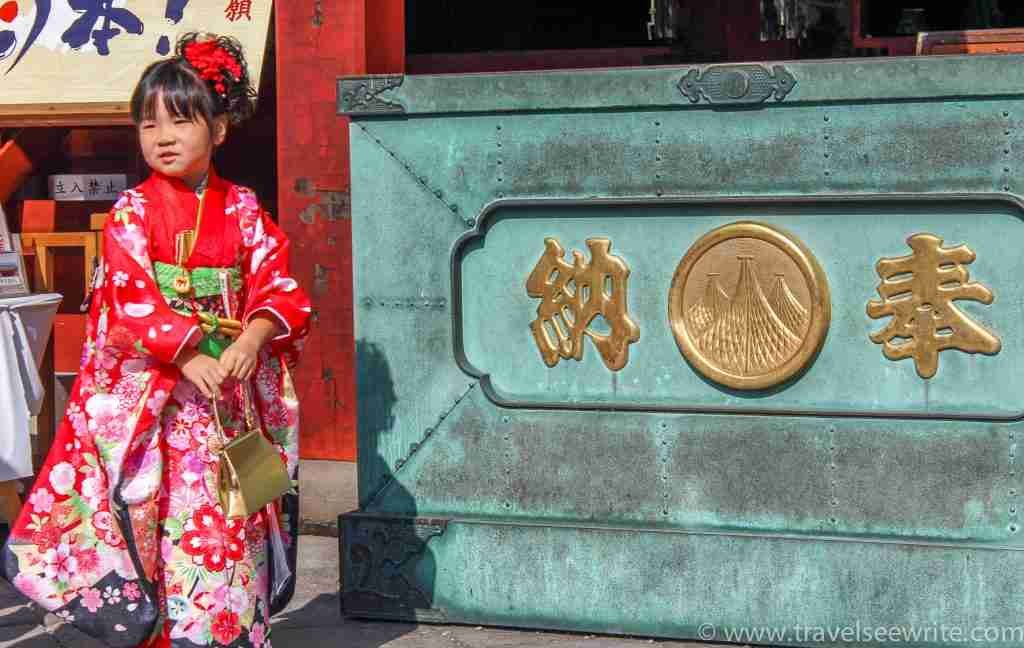
We spent some time visiting other shrines like Gojūnoto (5-Story Pagoda allegedly containing some of the ashes of the Buddha), Asakusa Jinja (a Shinto shrine devoted to protecting the Buddhist temple in a typically Japanese arrangement) and Chingodo Shrine (dedicated to the Japanese raccoon god tanuki).
After our spiritual tour, it was time to see the cultural side of Asakusa, Tokyo. Our next pit stop was Rokku Entertainment District. It used to be Tokyo’s leading entertainment district before the war, hosting Japan’s first cinema and more. However, the district has not regained its former popularity after the war. Today, Rokku offers attractions such as Rakugo theaters, cinemas, and Pachinko Parlors. Most of the visitors are elderly Japanese because they have money, time and interest. But my eyes were searching for Kabuki and Geishas, which were nowhere to be seen.
We were passing through areas, which had everything from Department stores to traditional Japanese Houses to animal and bird cafes. The place for which Elena was super excited was Kappabashi-Dori, the kitchen capital of Tokyo. Kappabashi is a one-kilometer-long street lined by shops selling amazing kitchenware items priced at attractive prices. This is the wholesale market from where Japan buys its kitchenware and Fake food Samples along with other essential items. Wish I had enough cash and luggage space!

Our two hour Asakusa Tour ended at the Kappabashi-Dori market. This walk had stoked my interest in knowing Japanese culture more. Sensing my interest Elena advised me to take the Sumida River cruise to Hama-Riku Garden to attend a tea-house ceremony and watch a Kabuki Theater. These were experiences beyond words, which I’ll share in my next post.
Hope you enjoyed virtually exploring Asakusa, Tokyo with me.
If you are planning to visit Asakusa do try out Context Travel. They will show you areas which even locals might not be able to.
Table of Contents
Don’t forget to read the travel tips to make the best out of your Asakusa, Tokyo Tour and 25 free things to do in Tokyo.
Related:
Japan: Land of the Rising Toilet Seat.
Where and when to see Cherry Blossoms in Japan
Offbeat Japan: Discovering the Autumn beauty of Hokkaido
Open season – the best time to visit Japan
A step-by-step guide to multi-visit Japan Visa
Have you been to Japan? I would love to know your thoughts.

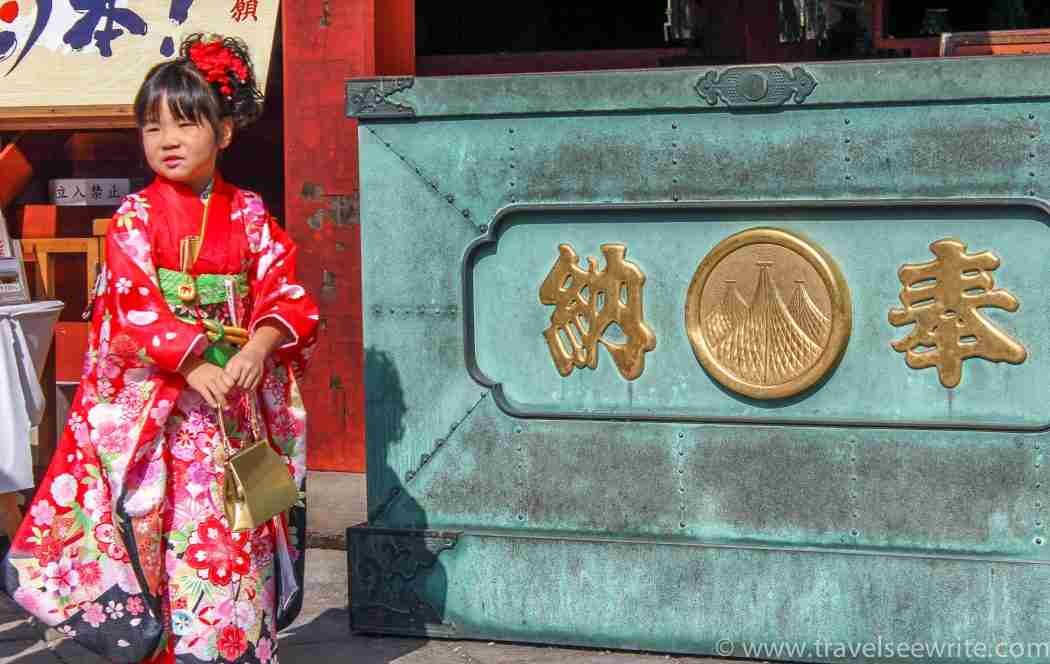

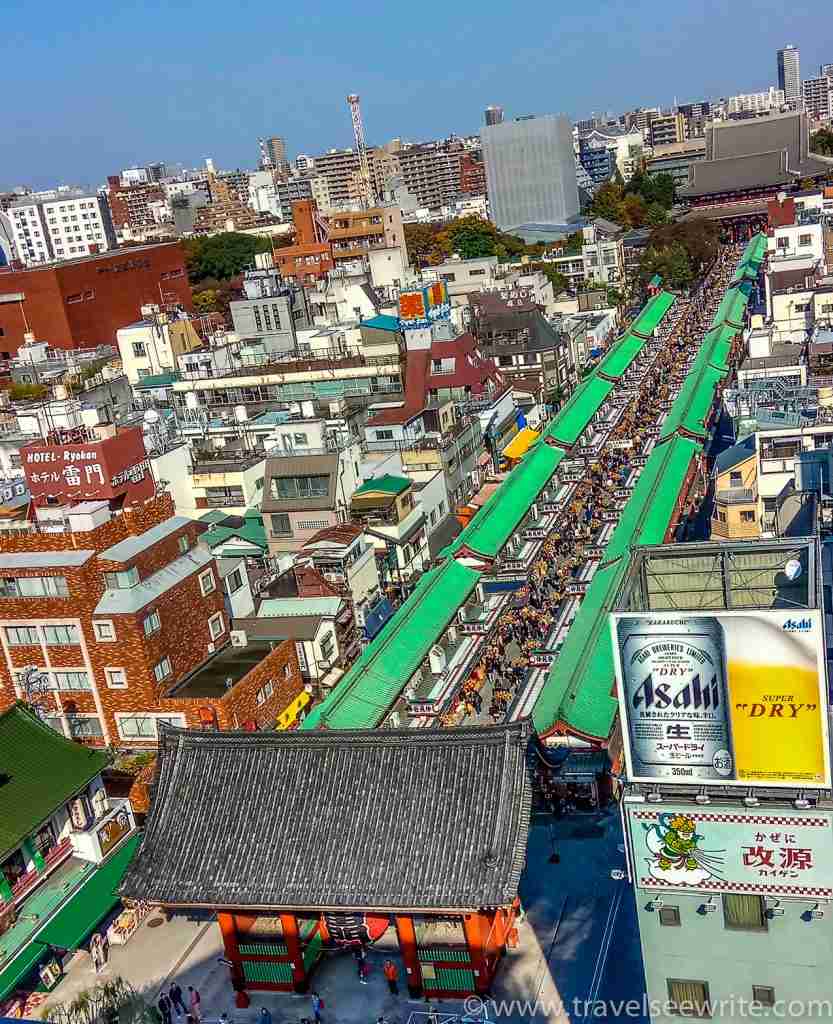
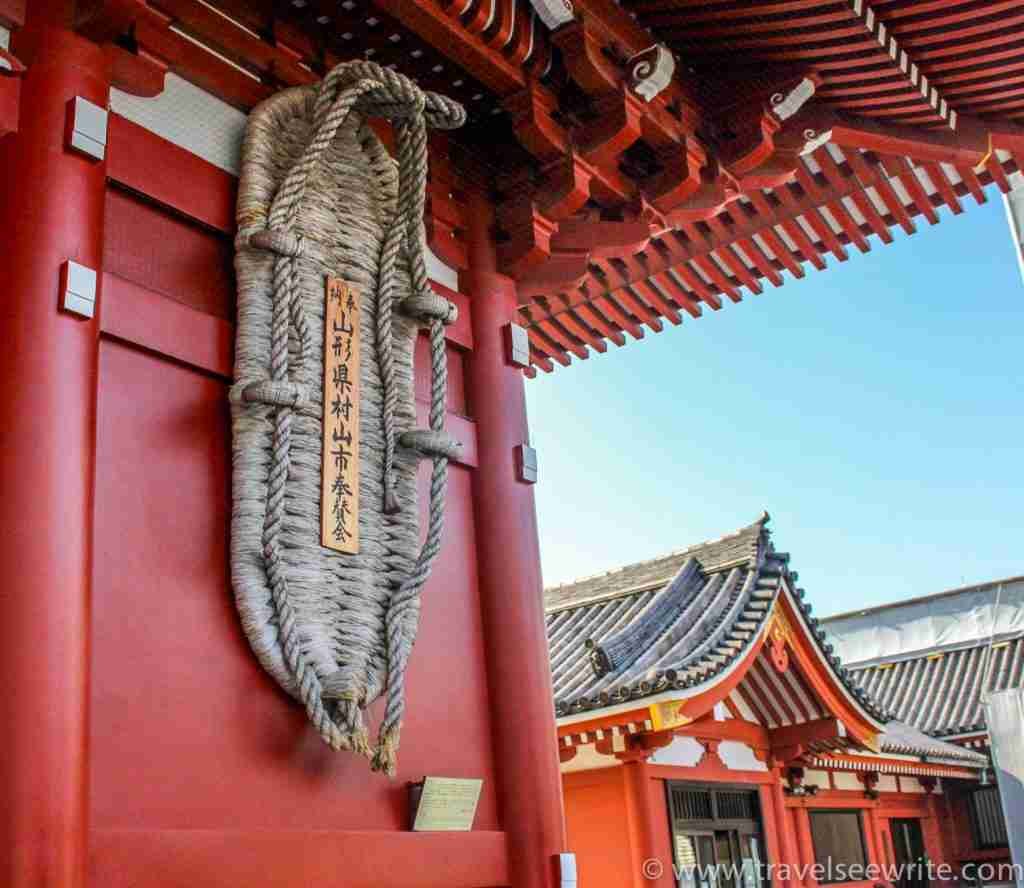
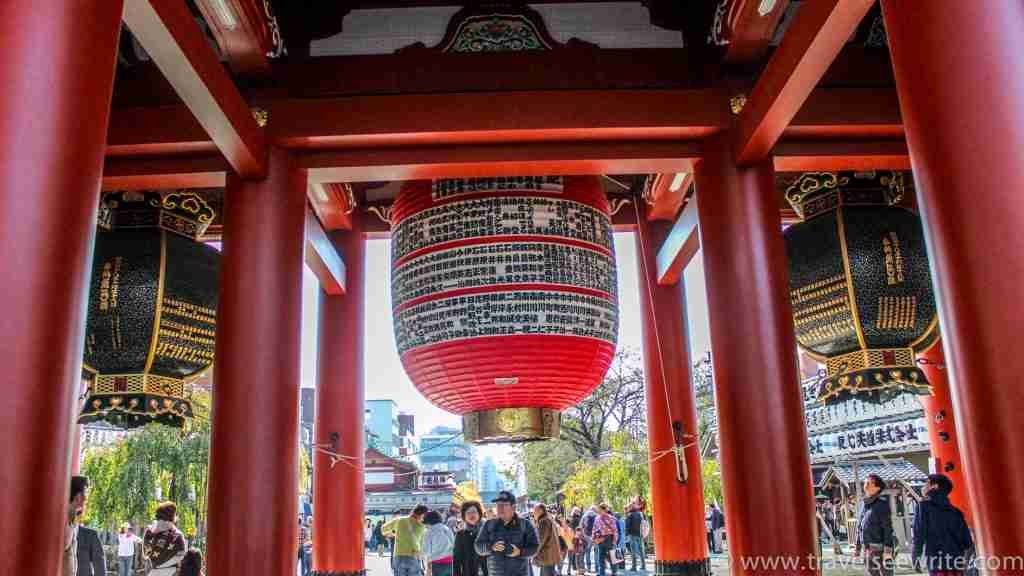



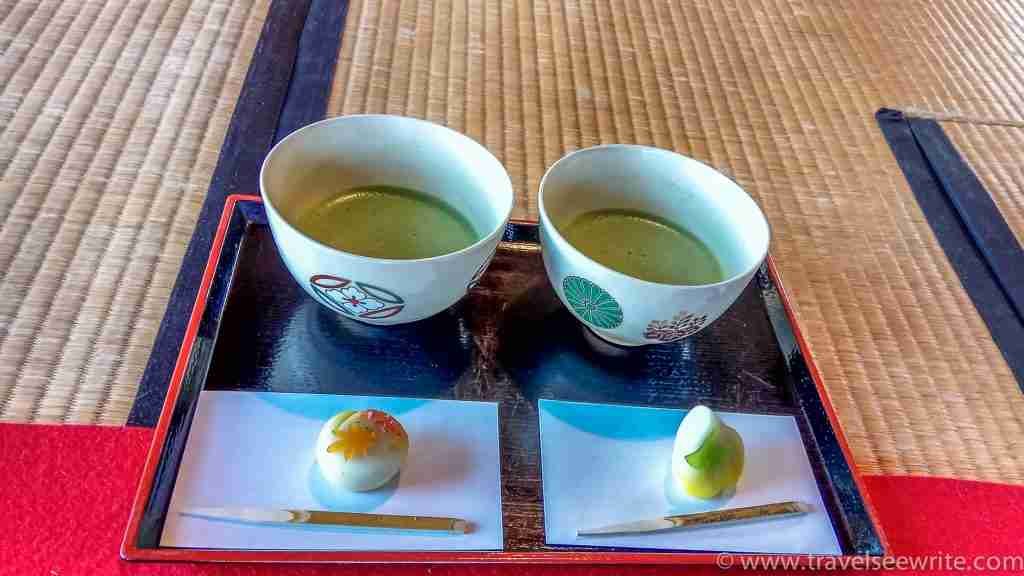
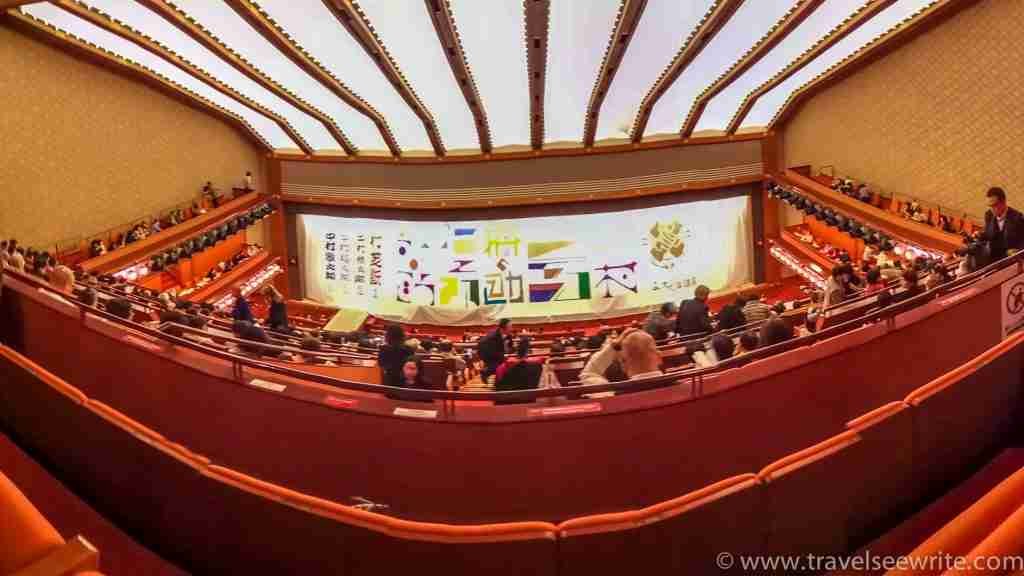




Asakusa is an island of everything historic and cultural in the midst of busy and urban Tokyo. I love the small trinket shops and the traditional restuarants around the area too !!
Hi Ruchira,
First of all my apologies for a late response. You know the funny thing. I was not at all excited about Tokyo because I thought all big cities are same but I am so happy to be proved wrong. Tokyo is different. It is not a soulless city of concrete and glass. It juxtaposes modernity with tradition and that is what I loved about it.
Perhaps next time I am going to spend more than a week exploring only Tokyo.
And yes, I too loved the food and shopping outlets there 🙂
Interesting post Archana. Some very detailed insights and quite a narrative. Hope to visit Japan soon.
Thanks a lot Deepika. Actually writing this post, I got very emotional. I always thought Hiroshima Nagasaki were the only calamities in Japan but you see the proofs of horrendous past everywhere. Japan was an eyeopener for me at many accounts.
I have not come across a single person who has not liked Japan. It is very special country. And I am sure you’ll visit Japan soon.
Very poignant story. I loved how the story starts on a sad note but cheers up as you narrate your experience of the city. Such is life. The only constant is change. You have piqued my interest in Asakusa. I didn’t even know about it. Like most I knew the tragedy of Hiroshima and Nagasaki but not this.
Thanks for the kind words Abhinav. I too had no clue about the background story about Asakusa until I visited the place.
I feel even a lifetime is not enough to explore Japan. Already thinking to go back 🙂
The architecture is incredible in Japan. The way their heritage is displayed side by side with the modern building is great.
Absolutely. I love how they have married the modernity with traditions.
This looks like a wonderful experience/tour to take! The little children dressed traditionally really made me smile, I love when countries hold on to their traditional cultures and clothing. The view from the rooftop looks incredible, such a bustling city going on below!
Hey Rhiannon,
First of all many thanks for stopping by and sharing your lovely comments.It was lovely. Frankly when I booked my trip to Japan I wasn’t expecting much from Tokyo. I thought it’s going to be yet another country. But Tokyo is so unique. It is one of the rare countries where you can find both tradition and modernity hugging each other.
I have big plans of going to Japan this year! I had no idea about the entertainment district though! Seems like a lot of rich culture and colors here. Will definitely check it out!
Hey,
That’s awesome. Japan is so unique so different. You’ll love it. Let me know if you need any help.
Wish you all the best for your trip 🙂
I wish I had known about this tour when I was there! I did visit the Sensōji Temple but I feel I missed quite a bit
First of all thanks for taking out time to read and comment on my blog. Actually I too would have missed a lot if i didn’t have a great guide. And don’t you worry if you missed it first time. There’s always a next time 🙂
Never heard about this cultural district Asakusa before – got to know through your blog only. I love all the pictures – especially the ones with kids and their colorful outfits!
I am glad i could share something new with you. Thanks for the appreciation. BTW did you read why the kids were those dresses?
I didn’t realise that Asakusa was Tokyo’s entertainment hub pre-WW2. It’s totally my favourite area in Tokyo – I loved it. The temple’s gorgeous and the markets sell so many wonderful items. I took a ferry there from one of the parks along that river which was a great trip although I didn’t realise the extent of the horrors of WW2 – you do get a lot more information if you go with a guide.
Hi Emily,
Thanks for going through the post. I too took that cruise to visit the park where I attended the traditional tea ceremony. Did you do that too?
Great article! I want to visit Japan so bad. Can’t wait to see all the places you wrote about and i’m happy to hear there is a great tour company that can show you non touristy spots!
Hi Nastja,
I was dying to visit Japan and it didn’t disappoint it. Loved every bit of it. It is so unique and different from other countries. Loved it. And Context Travel is a brilliant agency if you want to do walking tours. Their guides are really knowledgeable.
I loved Asakusa and Tokyo is such an amazing place! Definitely agree that it is a city the merges the traditional with a modern society. I will be going back soon for “Sakura” Cherry Blossom season and can’t wait! Enjoyed reading your blog post with its detailed history. Loved your photos too. Thanks for sharing 😊
Hi Del,
Japan is one of my favourite places in the world. I would say even 10 trips aren’t enough to visit that country. It has so much to offer. And I am so glad you liked my post 🙂
Wish you all the best for your Sakura trip.
Great post! cool photos!! thanks for sharing.
thanks a lot. I am so glad you liked it.
Best,
Archana
Great article ! thanks for sharing.
Oh how I love Asakusa. the beautiful temple with the shopping street leading up to it, Japanese dressed in kimonos, school children on field trips, tourists from all over the world. It is such a wonderful district and I always go there when in Tokyo. Last time we even go-karted through Asakusa dressed as Super Mario characters.
Great post about this wonderful district of Tokyo. I especially liked your picture of the asahi headquarters, known among the locals as the Golden Poop 🙂
I love the traditional dress. What a treat to get to see. History isn’t always easy to absorb and I’m always cognizant of that because we travel with the kids. We want them to know the truth about history at a time when they are old enough to understand. This looks like a lovely experience and we’d love to visit one day.
I have to admit my historical ignorance, but I love hearing about history. Thank you for the information about Tokyo. It has changed my perspective on a city I will be visiting soon.
Good post, and history lesson – your introduction about World War II was great. It looks and sounds like you had a lovely time touring Asakusa. The photo of the children playing in traditional Japanese attire is a great shot. And the colours in your pictures make Asakusa look so vibrant! Good job. Thanks for sharing!
I love the way you told a story and much-needed history lesson, I felt like I was actually there with you experiencing, seeing, tasting, etc. I was imagining the “hell” that happened through the photos you took and I got goosebumps. Thank you for sharing such a beautiful narrative with us.
Exploring Asakusa with you through your post was such a treat. I had no idea of the firebombing in Tokyo. It isn’t as widely known as the Hiroshima and Nagasaki bomb attacks. Such a sad tale to hear. I loved your photos of the Japanese individuals all dressed up in their traditional attire celebrating at the shrine. And please to share your story of your experience at the tea-house ceremony. Sounds like a wonderful memory.
Love your photography. All your pictures are so bright, clear and capture the essence of the people. Like you, we very much enjoy tours by local guides. It is absolutely amazing how much information the possess about their home cities. Perhaps what is more amazing is they can go off script. You can ask about anything that catches your eye or piques your curiosity and they will have an answer. Try doing that to a downloaded walking tour.
Some of the history here is really sad, but seeing how Tokyo has bounced back is a real encouragement to all. It’s crazy that some of those shrines date back to the 600s AD. I can hardly even wrap my head around the concept of that time frame.
Such a fascinating history in this country, really makes me a little sad to be missing out on it when I am right next door in Korea! Glad you got to check out the Shishi-go-san festival and get a taste of the culture there!
I really like that you started off this post with a little bit of history. It really captured me. This was a great description of the liveliness of the area, it seems like a really fun place to go to. It makes me want to travel to Tokyo now!
Went to tango last year but didn’t like it, it’s so busy and crowded but after seeing your post and reading it , it makes me wanna go back . Awesome job!!
This district of Tokyo looks amazing. I would love to go here to explore with my family. It looks like there is so much to see and do here. Next time hopefully
Asakusa sounds fascinating. I love the World War II background introduction. The traditional dress is so beautiful and the fake food samples look so real.
I visited Tokyo very quickly. Would love to go back to see more of the city and the country. Your post really makes wanna discover more!!
I’d Love to visit Tokyo. Your photos are amazing and so inviting. I love that they have a cup at that indicates when it is time to stop drinking! It would be great to see the theaters and temples, too.
I never visited the Asakusa district of Tokyo when I was there. The history is very brutal in this part of the world but it looks like its thriving now. You’ve photographed this area of Tokyo wonderfully!
I love all your photos! They gave me a sense of what Asakusa is like. I almost got to Tokyo two years ago and I actually already have a list of places to see, and Asakusa is one of them. Unfortunately, I got sick at the time of my travel. This post has made me want to be in Japan even more.
Wow! I had never heard of this little corner of Tokyo before your post! What cute little trinket shops, and the shrines are just beautiful. I can’t wait to visit Japan and have Asakusa at the top of my Tokyo list!
Asakusa looks absolutely unreal! I’d never heard of it before reading your post, but I would love to go there. You’re so lucky you got to see the festival happening, and all the activities. The fake food still looks good to me!
Really like your photos and it shows the old and the new of Japan so nicely. Really nice article
I enjoyed this historical insight into the parts of Tokyo that have been lost forever. It was really sobering to read about the firebombing, and I hope war never breaks out like this again. You looked like you enjoyed being the observer on the 3-5-7 festival and the traditional clothes looked pretty cool!
Oh perfect this is nice added value to my trip to Tokyo soon. This city is so big even after 4 times it still feels like Im going to a new city. Will try to check this out too.
This is fascinating. I honestly had no idea about those bombings in Tokyo. It sounds utterly horrific and its shocking how many died.
Such an interesting article! I also loved the pictures, so vibrant and full of colour! I was also very keen on the historical side you gave us. I am dying to know more about the tea ceremony, so I’ll keep checking your blog. Thanks for sharing!
I appreciate learning the history of a place, so sad. Asakusa has developed a wonderful city with amazing architecture. I would enjoy photographing the landscapes, the city, and colorful buildings. And the children dressed in traditional clothing would be a photo to make me smile.
It always surprises me that more people don’t know the destruction the fire bombing did. So thank you for mentioning it in such vivid detail, it’s a dark part of history that is often overlooked.
Asakusa is such a beautiful area. Wandering around there is always a treat. I got my noren in Kappanbashi, I was so excited when it came up in your article! It’s a great little neighborhood.
You were so lucky to stumble upon children dressed in traditional clothes celebrating the 7-5-3 festival with their families. I had no idea that Tokyo has been though such a massacre after the attacks from Pear Harbour. You wouldn’t think, imagining how Tokyo looks like these days. The walking tour of Asakusa sounds fantastic, especially that it was so detailed and you found out stories first hand.
This has piqued my interest to visit Japan. There were so many things that I learned while reading the post. For instance, I did not know that US fire bombing was more tragic than Hiroshima and Nagasaki. There was something like ‘The Entertainment District of Asakusa’.
Local tours are always very beneficial. They help us to explore and discover much beyond Google.
Fantastic read and loved the way the post with a sad aspect but then got cheerier. Kept me interested to the very end. I havent been to Japan yet but would love to check out this area. Cant believe the massacre so soon after the Second World War, didnt even know that.
I did not know that the US Firebombing killed so many people! Tokyo is amazing and Asakusa was where we stayed when we visited. I loved every bit of that place, the Sensoji temple was amazing and I remember waiting there until sunset because I wanted to see it brilliantly lit up at night. Your pictures of the people in the traditional attire are awesome.
We are planning a trip to Japan and this was a very informative read! I really wasn’t aware that the US firebombing attack had killed more people than the atomic bombs. This is terribly sad and scary at the same time…